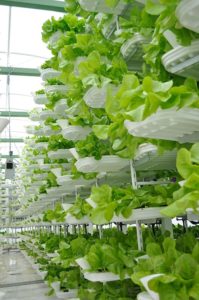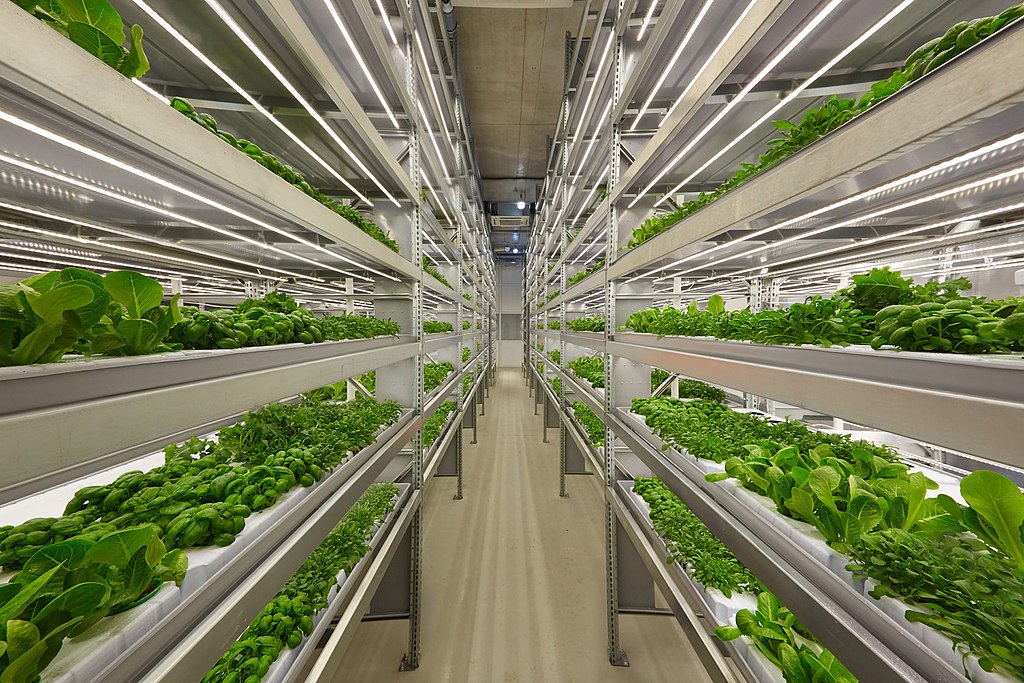Meanwhile, many consumers are looking for more sustainable and eco-friendly lifestyles that drive these developments.
According to Momentum studies (McCann Group agency), agricultural technologies and vertical farms would trend this year. By the second half of the year, it can be seen how the global perspective on this topic has broadened. Today, many individuals are looking for agricultural alternatives, large companies are engaging in vertical farming within cities, while others are providing technological solutions with innovative devices that you can have in your home.
Why are so many people betting on vertical farming?

Vertical farming tries to maximize the use of space. Plants are produced in layers arranged vertically. This method is employed by individuals on a small scale (in their own home or community), while agricultural companies can use the techniques in controlled environments on a larger scale.
Interest in vertical farming has increased due to concerns about resource use, population growth along with food demand, and interest in consuming healthier products free of insecticides. These systems are a good tool to guarantee demand, using sustainable production.
According to the Food and Agriculture Organization of the United Nations, 13.8% of all food in the world is wasted. Meanwhile, 45% of agricultural products lose nutritional value due to the distances between fields and markets. In an attempt to minimize these numbers, many are analyzing and taking steps to make sure that agricultural operations have better distribution to ensure that they reach households.
What is it all about?
In vertical farming, environments are controlled for ideal temperature, light and humidity conditions. This ensures that no additional compounds are needed for growth, conservation or pest elimination.
As it is controlled, it represents a solution that guarantees productivity. Among the systems that can be used are hydroponics, aquaponics and substrate systems.
Commercial vertical farming crops are generally used to produce kale, lettuce, chives, strawberries, mint and basil. However, there are a large number of species of fruits, flowering plants, vegetables and fine herbs that can be produced this way.
Some are more economically viable than others, so it is important to do some research before starting crops.
Pros and cons of vertical farming
Not only is vertical farming ideal for producing large quantities of crops in small spaces, it is also guaranteed to save water and produce without contamination, all year round. These benefits are important in places where climatic conditions are severe and soils for cultivation are scarce.
Fresh products can be obtained out of season, which not only guarantees healthier and more sustainable food, but also a possible price reduction. Local provision of fruit and vegetables means that fuel is no longer a pollutant source, as transport and road times are reduced.
Despite the many advantages, there are also some drawbacks to this process. These systems do not take direct advantage of solar energy, so it consumes quite a lot of power, in addition to needing backup in case of outages. However, LED technology can be more economical, and its operations can be harnessed by renewable energy such as solar panels.
On a large scale, these cultivation centers need highly skilled personnel. Technicians must know how to install, monitor, maintain and operate the system. Therefore, labor can become expensive.
Can you have your own system at home?
You can definitely have your own vertical farming system. Many companies are launching easy-to-use appliances where anyone can grow food, such as lettuce, in their living room. Some of these resemble small refrigerators and others look like little towers of bushes. This year, one of the most talked about has been LG’s smart greenhouse, which won a CES 2022 Innovation Award.
However, you don’t need to spend huge amounts of money if you want to have your own vertical vegetable garden. Many people are resourceful, using recycled plastic bottles, PVC pipes, canning containers, cans and glass bottles.
When employing home vertical farming with limited resources, using sunlight, choosing the plants that will work and being creative are recommended. This way, you will be able to create a vertical farm that will accompany you throughout the year, allowing you to save money and eat healthier.
Image credits: ifarm.fi and Valcenteu

